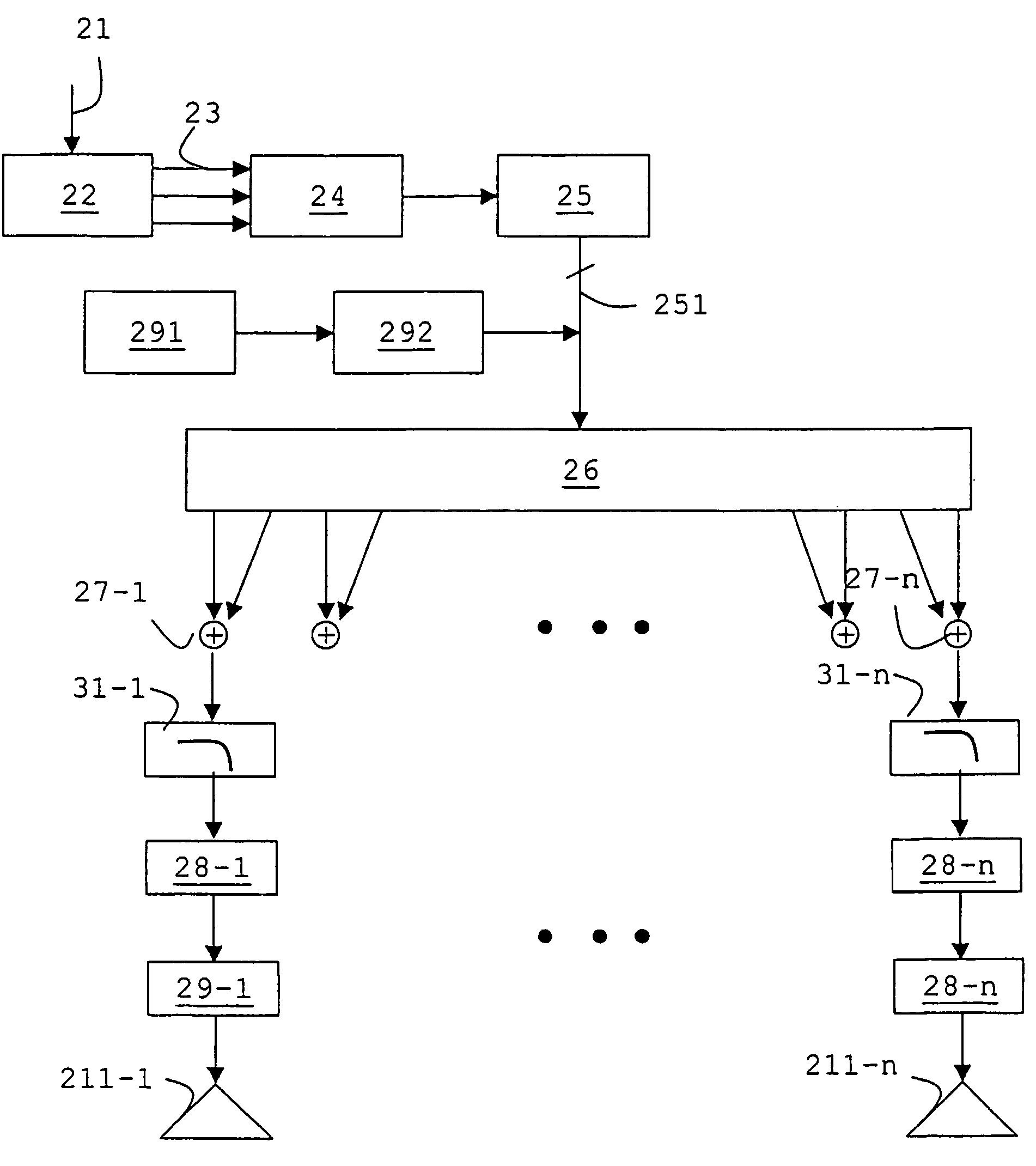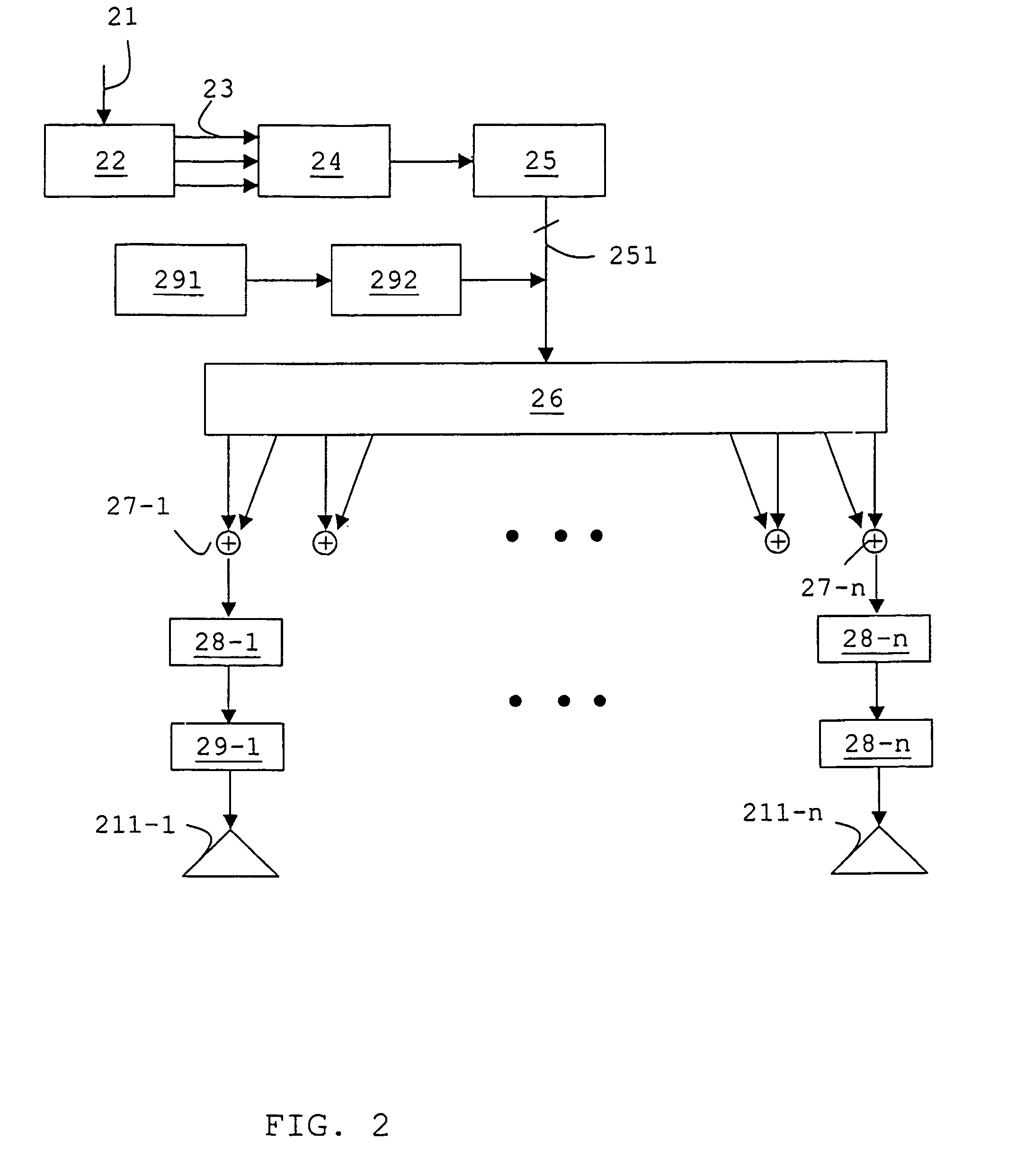Signal processing device for acoustic transducer array
a transducer array and signal processing technology, applied in the direction of transducer details, electrical transducers, stereophonic arrangments, etc., can solve the problems of constructive interference, complex task of designing a functional and economically viable source of acoustic energy capable of projecting sound into predetermined directions, etc., to achieve the effect of reducing the number of transducers
- Summary
- Abstract
- Description
- Claims
- Application Information
AI Technical Summary
Benefits of technology
Problems solved by technology
Method used
Image
Examples
Embodiment Construction
[0033]Firstly there is described a known arrangement of transducers capable of steering a beam of sonic signal into one or more predetermined directions, also referred to as DLS (Digital Loudspeaker System).
[0034]The basic arrangement of FIG. 1 shows an array 10 comprising a plurality of spatially-distributed electroacoustic transducers 11-1 to 11-n mounted on a common chassis 12 and arranged in an essentially two-dimensional array. The transducers 11 are each ultimately connected to the same digital signal input. This input is modified and distributed to feed the transducers. Beamsteering is accomplished by adding delays or phase shifts to the signal to ensure a constructive interference of the signals stemming from the individual transducers at pre-determined locations 13, 14. For the purpose of the present example, these location are spots on the side or rear wall of a room giving sufficient reflection to redirect the sound back to a listener 15 in the room. Basic geometric calcu...
PUM
 Login to View More
Login to View More Abstract
Description
Claims
Application Information
 Login to View More
Login to View More - R&D
- Intellectual Property
- Life Sciences
- Materials
- Tech Scout
- Unparalleled Data Quality
- Higher Quality Content
- 60% Fewer Hallucinations
Browse by: Latest US Patents, China's latest patents, Technical Efficacy Thesaurus, Application Domain, Technology Topic, Popular Technical Reports.
© 2025 PatSnap. All rights reserved.Legal|Privacy policy|Modern Slavery Act Transparency Statement|Sitemap|About US| Contact US: help@patsnap.com



